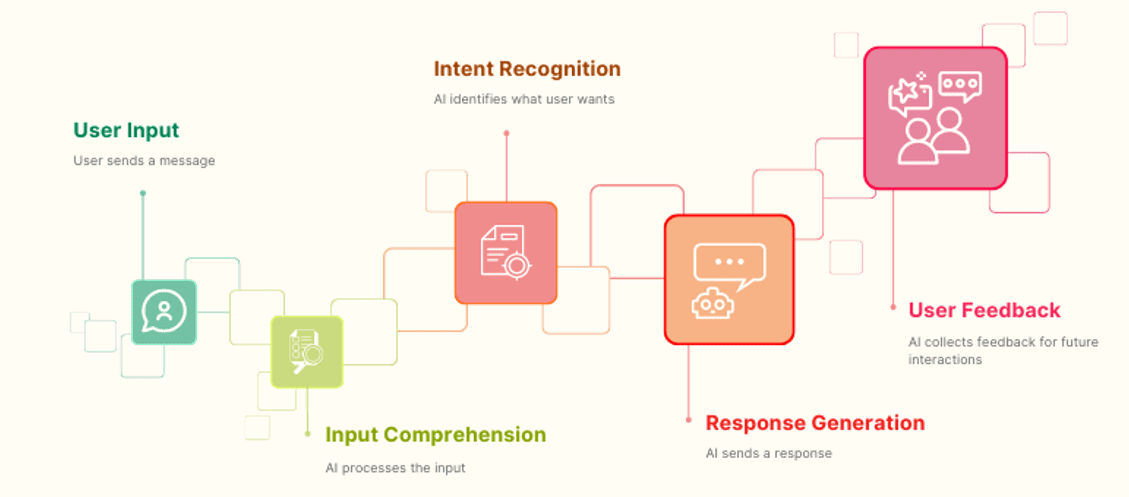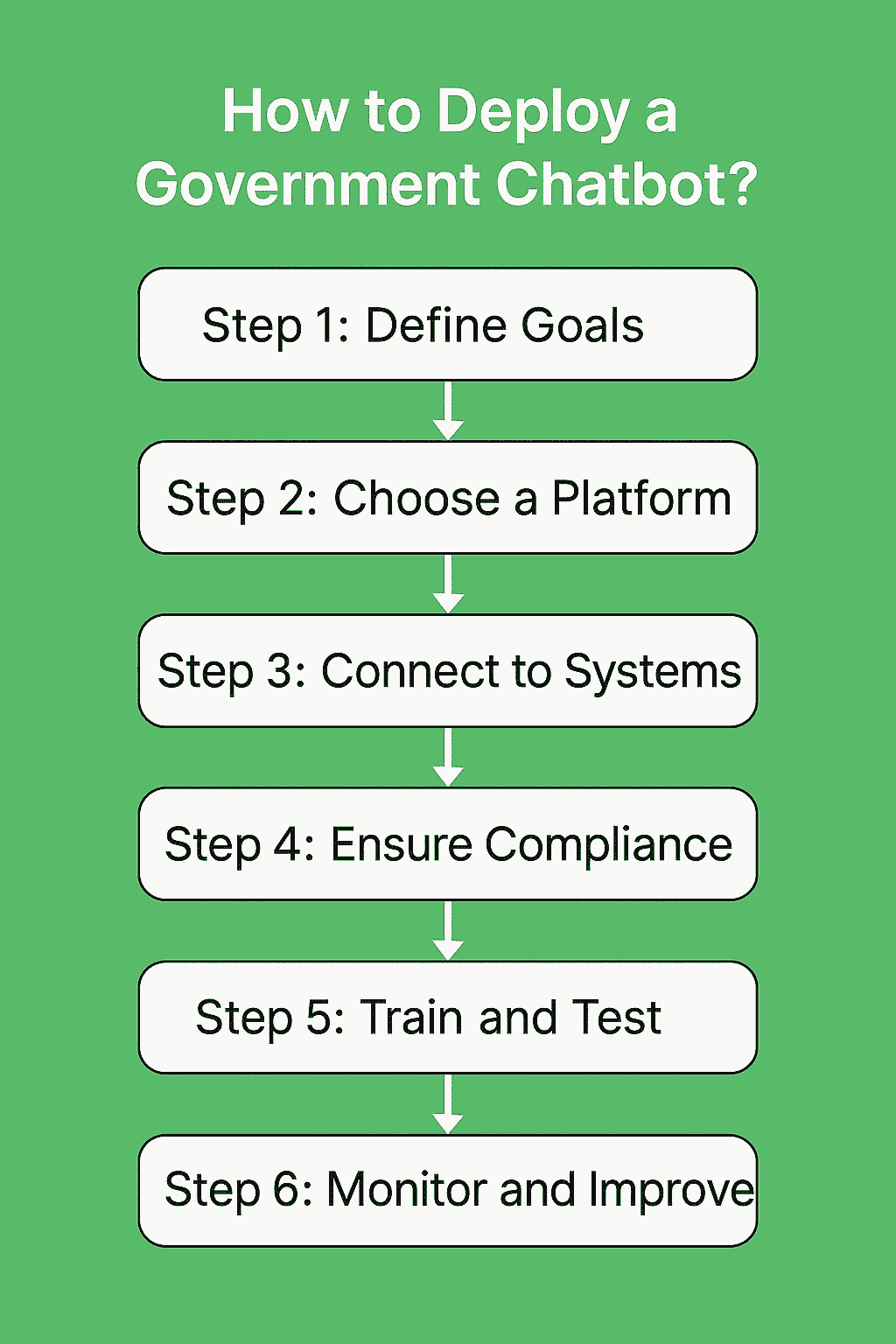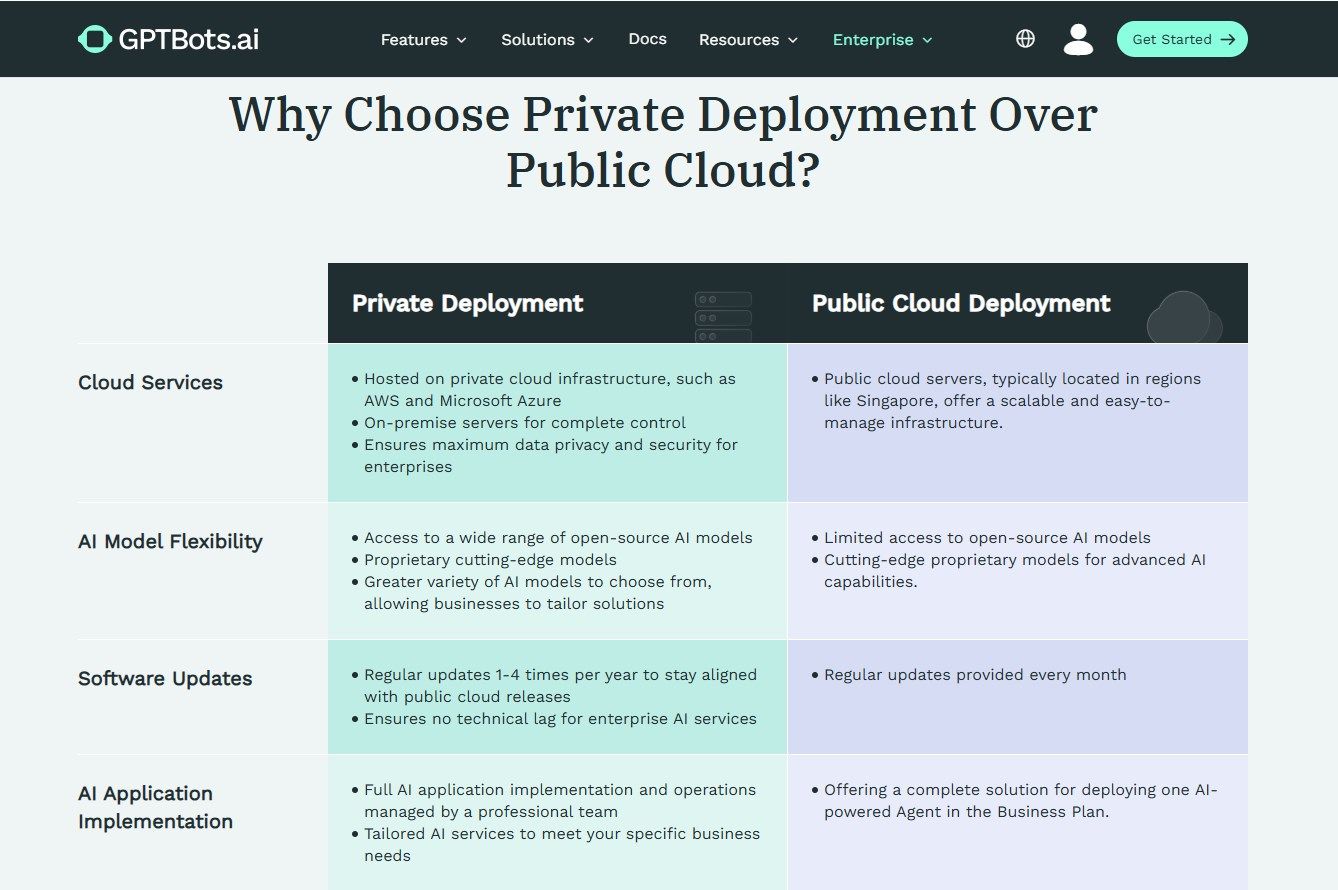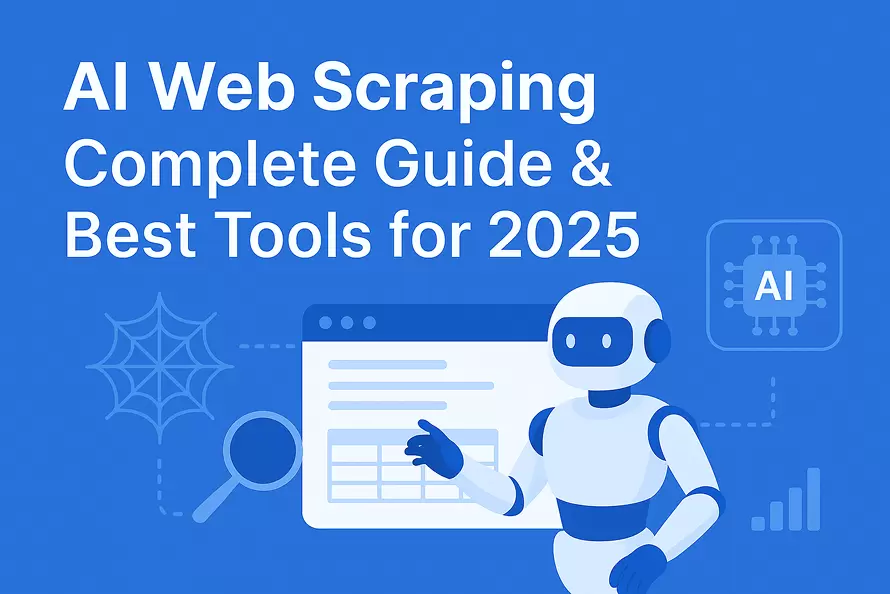Governments always aim to make their services better and more efficient but there are lots of challenges involved. This can be anything from lack of manpower to limitations in budget and costs for handling sensitive information while making sure that processes are transparent. So what else can work? To deal with all these challenges, many governments are turning towards AI solutions. What else could be a more practical tool than a Government Chatbot?
Across different levels of government, agencies are beginning to adopt chatbots as a smarter way to manage public services. These tools help with routine tasks, speed up responses to common questions, and make it easier for citizens to access information, all while following strict data privacy and security requirements.
Part 1. What Can a Government Chatbot Do for Citizens and Staff?
A chatbot for government services is a sort of virtual assistant that uses artificial intelligence (AI) and Natural Language Processing (NLP). They’re made to give quick responses and help government functions by automating a bunch of routine tasks.
According to a study by REI Systems, 60% of government organizations will go towards business process automation by 2026 and even the authors at Deloitte Center for Government insights believe that Government processes augmented by AI can significantly increase speed, enhance quality and reduce costs. With that in mind, what are its main capabilities?
# For Staff
✅ Empowering Law Enforcement and Emergency Services
A local government chatbot can help Law Enforcement and Emergency services by giving easy legal guidelines, case file information or dispatch protocols pretty quickly. This would help them make quick decisions in high-pressure situations without wasting time on manual searches or going through paperwork.
✅ Simplifying Report Submission and Form Handling
Chatbots can automatically collect data, check entries and route information to the correct departments. This makes it much easier to submit reports or forms and it helps with making sure that the information is accurate.
✅ Streamlining Internal Government Workflows
Government departments mostly face repetitive questions which can be anything from support requests to FAQs. Government chatbots can automate these responses so that employees don’t need to waste a lot of time on easy to answer questions.
# For Citizens
✅ Responding to Public Inquiries 24/7
A government chatbot can instantly respond to questions from residents about taxes, permit applications, voter registration, or public transportation. Instead of waiting on hold with customer service representatives or going around complex websites, citizens can receive real-time answers, which makes it easier on the public as well as the call center agents.
✅ Improving Accessibility and Inclusivity
One major help a chatbot can give is that it can be used to communicate in different languages and through different ways. Departments often have to work with a wide variety of citizens which can come from different backgrounds. Instead of hiring staff or translators for another language or different disabilities, a chatbot can do the work for them, follow accessibility standards and also operate on different platforms like websites, mobile apps, or messaging tools. This ensures that everyone, including people with disabilities, can access critical public services with ease.
Part 2. How Government Chatbots Actually Work

Image from closeloop
A 2024 report by Gartner said that over 70% of government CIOs ranked AI-driven automation as a top strategic priority which shows that AI is increasingly being used for fulfilling government goals. But how does a government chatbot actually work?
1 Natural Language Processing (NLP) and Machine Learning (ML)
All chatbots mainly work using a NLP engine that helps turn human language into data that can be read by the AI. Through ML algorithms, the chatbot continuously improves its understanding and accuracy by learning from previous interactions.
2 Backend Integration with Government Systems
To provide real-time responses based on data, the chatbot integrates with internal databases, CRM systems, document repositories, and APIs. This enables the chatbot to get specific information or update systems like logging in complaints, without the need for any manual work by the department.
3 Role-Based Access and Security Protocols
Security is extremely important in public sector deployments which is why strict authentication protocols are set in chatbots. Protocols like OAuth, role-based permissions, and end-to-end encryption to ensure sensitive information, like personal identification or legal documents, is kept safe.
4 Multichannel Deployment
Modern government chatbots aren’t restricted to just websites. They can be used over SMS, social media platforms, mobile apps, and even voice assistants so they can work in a wide variety of places.
5 Analytics and Continuous Improvement
Chatbots also have dashboards built into them to keep track of usage patterns, identify common problems and improve the chatbot’s knowledge base. This helps the system constantly evolve and meet the changing needs of both the public and the government staff.
Part 3. How to Deploy a Chatbot for Government Services?

Setting up a chatbot for government services is more than just putting a bot on a website. It's about improving access, efficiency, and transparency for the public. From answering frequently asked questions to guiding citizens through application processes, a well-deployed chatbot can significantly ease the workload on staff while offering 24/7 support.
In this section, we’ll walk through the key steps to successfully launch a chatbot tailored to government needs.
# Step 1: Define Use Cases and Objectives
You need to start by identifying the key functions that the chatbot needs to handle. This can be anything from answering FAQs to assisting with permit renewals or internal help desk support.
The goals need to be clearly defined so that it’s easier to identify what data is needed and where to integrate the chatbot.
# Step 2: Choose a Scalable Platform
Selecting the right platform is key to long-term success. Building a chatbot from scratch can be costly and time-consuming, so choosing a platform with reliable prebuilt models is a smarter choice. With so many options available, it’s important to go for one that fits your specific needs.
For instance, GPTBots.ai offers a powerful AI engine that includes pre-trained models tailored to various needs. It supports multiple languages and provides flexible API integration. It is not only the preferred medium for government agencies to serve the public, but also highly suitable for internal cross-departmental expansion.

# Step 3: Integrate with Legacy Systems
Many government agencies still rely on legacy databases and internal systems that have been in use for many years. These systems typically store important citizen records, case histories, and policy data, etc. Therefore, chatbots must access this data in order to provide accurate and up-to-date responses. Without proper integration, chatbots may provide incomplete or outdated information, leading to distrust or inefficiency.
To solve this problem, the platform you choose should support integration methods that work with the old system (not just modern APIs). Look for features such as support for RESTful API and middleware connectors. Real-time data access, secure transmission, and compatibility with government-level authentication protocols are also crucial. This ensures that the chatbot can communicate reliably with various internal platforms and provide accurate services without compromising data integrity or security.
# Step 4: Ensure Compliance and Security
For government chatbots, data protection is about law and public trust. These systems typically handle sensitive information, so they must comply with regulations such as the General Data Protection Regulation (GDPR) or local data laws.
Secure chatbots should use strong encryption technology, limit access rights through role-based control, and retain audit logs for key operations. Anonymize data as much as possible to reduce risks. Compliance is not a one-time task but a continuous requirement throughout each stage of deployment.
# Step 5: Train, Test, and Launch
After all the settings are completed, the government chatbot needs to be trained with real cases, such as common questions from citizens, departmental work processes, and basic service tasks. This helps the chatbot understand the actual ways in which people seek help.
After the training is done, it is necessary to carefully test the chatbot. Try different types of questions, including various languages or uncommon wording, to ensure that it can respond well. Having real employees review the answers is also a good way to detect errors early.
Testing and releasing it in the team first can help you collect feedback and solve problems, and then promote it to everyone.
# Step 6: Monitor and Optimize
After the launch, the chatbots must still be constantly monitored to make sure that they’re working well and to make any tweaks if needed. Use analytics tools to track engagement, resolution rates and any feedback. Besides, continuous updates to the knowledge base ensure that a government chatbot remains relevant and effective as policies or citizen needs evolve.
Part 4. Private Deployment and Data Security Considerations
For government services, where sensitive data is often involved, choosing the right deployment method and keeping user information secure are essential. Private deployment offers more control, especially when public cloud or third-party hosting raises concerns around privacy, access, or compliance. Here are the main areas to focus on:
-
Full Data Ownership
To protect citizen data, many agencies prefer to keep all AI processing and storage within their own systems. On-premise deployment gives full control over where the data goes and who can access it, helping reduce risks from third-party involvement.
-
Role-Based Access and Permission Controls
Government services often involve multiple teams and departments. The chatbot platform should allow administrators to assign different access levels based on roles, so each team only sees the data relevant to them. This helps prevent unauthorized access and improves internal security.
-
Security and Encryption Standards
Since chatbots may handle legal records, personal IDs, or financial information, it’s important to have strong encryption in place—both when data is stored and when it’s being transferred. Real-time monitoring tools can also help detect and stop any suspicious activity early.
-
Performance & Scalability
As user traffic grows, the chatbot platform needs to scale smoothly without causing delays or crashes. It also helps if the provider offers setup tools or support that make deployment easier, especially for agencies with limited technical resources.
-
Compliance with Local Laws
Every country or region has its own data protection laws. Before deployment, it’s important to check whether the platform meets these legal requirements and how much time is needed for approval or audit processes.
-
Long-Term Sustainability
Deploying a chatbot takes time and resources, so it should be designed as a long-term solution. This means choosing a platform that is reliable, regularly updated, and flexible enough to grow with your service needs.
Part 5. Why GPTBots Stands Out as a Government - Ready Chatbot Platform?
Choosing the right platform is often what determines whether your chatbot project succeeds or stalls. That’s where GPTBots.ai comes in. For government agencies looking for a secure, scalable, and easy-to-deploy solution, GPTBots offers a strong balance between flexibility and full control.
Before delving deeper into the private deployment, let's quickly take a look at what advantages you will gain by choosing GPTBots:
- Data Privacy and Security - Protects sensitive data with full encryption, access controls, and compliance with local laws
- Cost-Efficient and Scalable - Reduces long-term costs while adapting easily to future needs.
- Seamless System Integration - Easily connects with existing tools, CRMs, and data platforms in the public sector.
- Government-Specific Features - Designed for citizen support, policy help, and public tasks.
- High Availability and Full Autonomy - Reliable performance with full control over settings.
- Multilingual and Multimedia Support - Communicates in 90+ languages and handles media content.
- No-Code/Low-Code AI Deployment - Low requirements for technical skills, easy to set up.

GPTBots delivers end-to-end AI solutions for enterprises and public services, enabling the deployment of intelligent agents across customer service, sales, enterprise search, and data analysis. With GPTBots, organizations can automate workflows, unlock insights, and lead in the AI-driven era.
# Key Solutions Offered by GPTBots:
- Customer Support: Automates most citizen inquiries with 24/7 multilingual help, making public services faster and easier to access while lowering costs.
- AI Assistant for Outreach: Helps understand and reach people better, making public programs work smoother.
- Enterprise Search: Enables staff to quickly access important policies and information, improving service accuracy and efficiency.
- Data Insights: Provides real-time data analytics to support smarter decisions and improve public service delivery.
1 Data Compliance and Privacy
GPTBots makes it easier to deal with compliance issues and data privacy concerns.
- Full Data Ownership - Ensuring all AI processes remain within government infrastructure
- Optimized Performance - Fast, accurate interactions supported by reliable performance tools like NVIDIA Enterprise GPUs.
- Regulatory Compliance - Ensure full compliance with national data protection laws and guarantee the security of enterprise and governmental AI operations.
📌 Result: This makes sure that even highly regulated departments can use chatbots in government services without risking compliance or control.
2 Cost Effective
Public budgets are often tight, so tools need to deliver value without draining resources.
- Works on Mid-Range Hardware - Even GPUs like the RTX 3090 are enough for smooth performance.
- Lower Energy Use - Reduces ongoing energy costs by 30 -50% with DeepSeek’s advanced inference optimization.
- Pre-Configured AI Toolkits - Prebuilt AI tools save time and reduce the need for advanced technical knowledge.
📌 Result: This makes GPTBots accessible not just for national institutions, but also for local councils and mid-sized public agencies without IT support.
3 Enterprise-Grade Security and Access Control
Security is always important but it’s especially important in public services so AI systems too must have the highest security standard. GPTBots was built with this in mind and as such it has:
- Role-Based Access Control (RBAC) - Splits access by department, rank, or role.
- End-to-End Encryption - All data from inputs to logs is protected against any unauthorized access through strong encryption.
- Real-Time Monitoring - Built-in logs and alerts help keep everything traceable.
📌 Result: This security framework allows GPTBots to serve as a trusted chatbot for government services, even in departments handling sensitive data.
4 Fast Integration with Public-Sector Tools
GPTBots also supports direct integration with tools already in use by many public institutions.
- System Compatibility - Compatible with platforms like LiveChat, Zendesk, WhatsApp, Slack, and government CRMs.
- Flexible APIs - Makes it easier to connect with citizen databases or internal portals.
- Multilingual & Media Capabilities - Supports over 90 languages, plus images, videos, and maps.
📌 Result: Government services can be improved without disrupting existing workflows.
5 Tailored Features for Government & Public Enterprises
GPTBots are not only built for business purposes; it also takes into account the needs of the public sector:
- Smart Citizen Services - 24/7 multilingual support for inquiries, request, reporting, and more.
- Policy Interpretation - Quickly summarizes legal or policy documents.
📌 Result: A chatbot that truly understands and supports the way government works.
6 Future-Proof and Ready to Scale
GPTBots ensures that it updates with government needs.
- Regular Model Updates - Regular updates 1-4 times per year to no technical lag for enterprise AI services.
- No-Code AI Deployment - Democratizes AI integration for non-technical teams.
- No Vendor Lock-In - Governments maintain full ownership of their AI tools and data.
📌 Result: A future-proof solution that grows alongside your digital transformation goals.
Conclusion
If any institution is looking for a government chatbot that offers everything, then GPTBots is the best platform to go with. Whether it's modernizing public services, automating interactions with citizens or making internal workflows better, GPTBots makes sure that your transformation is done in a way that is both secure and scalable.
Get Your Custom Demo






